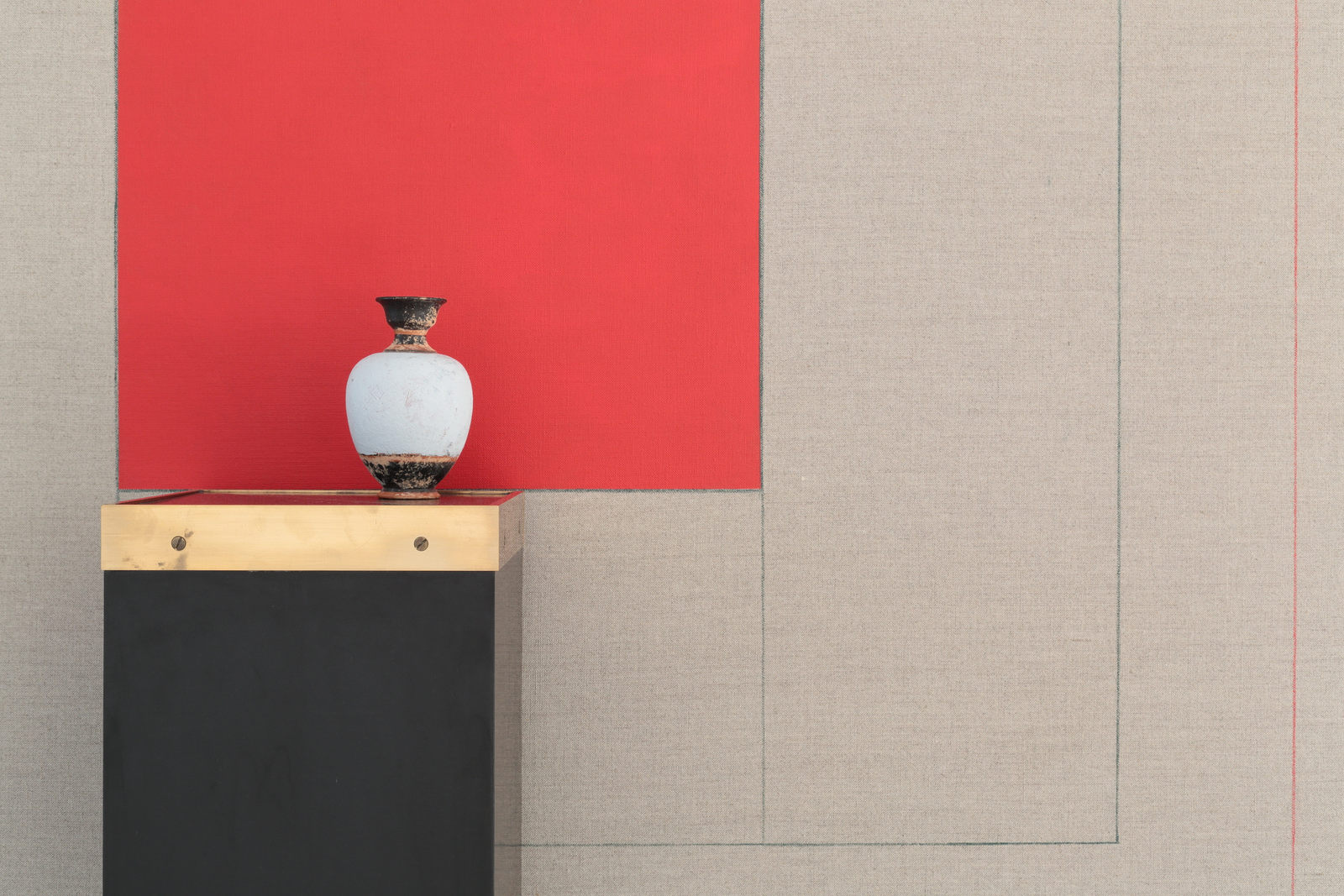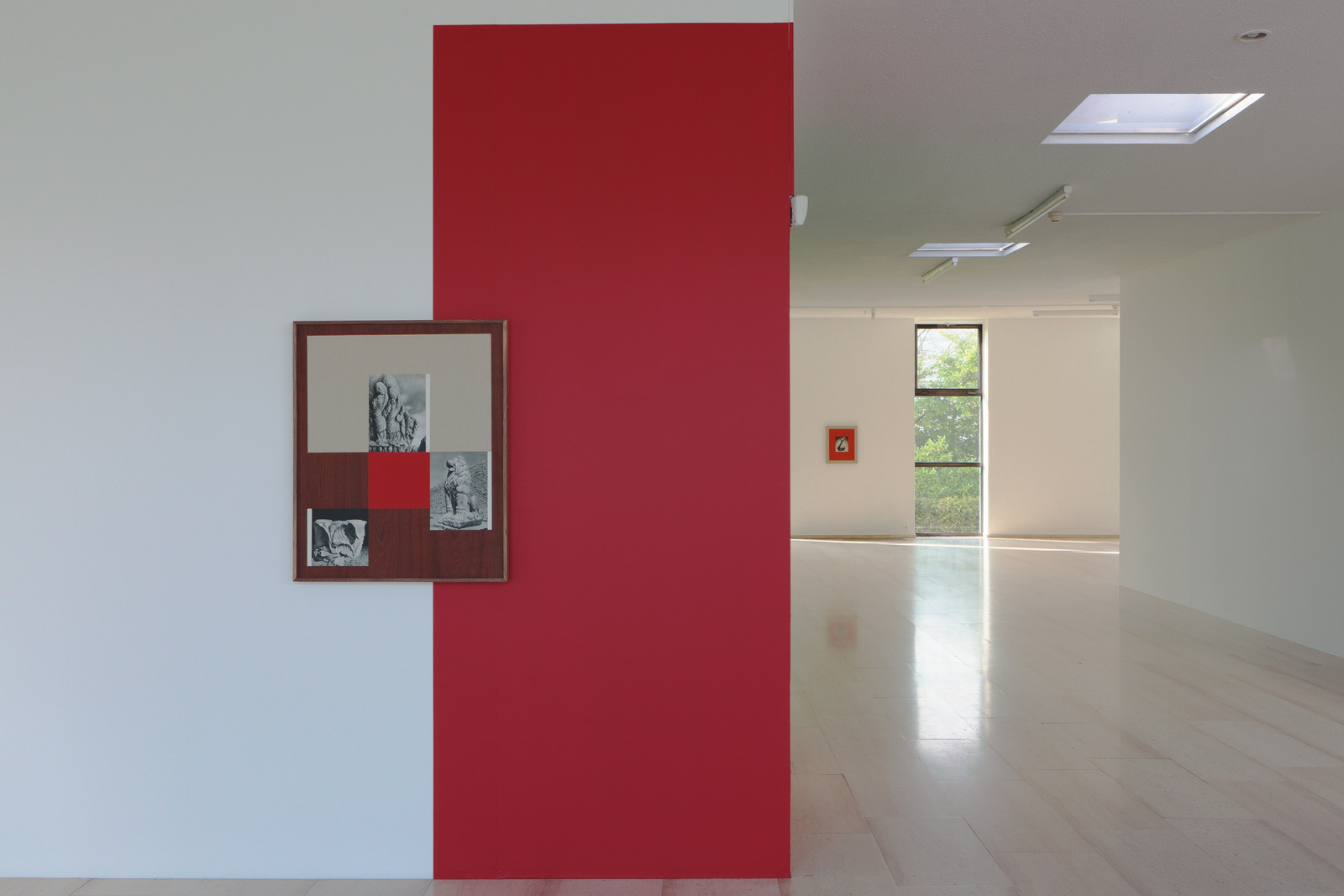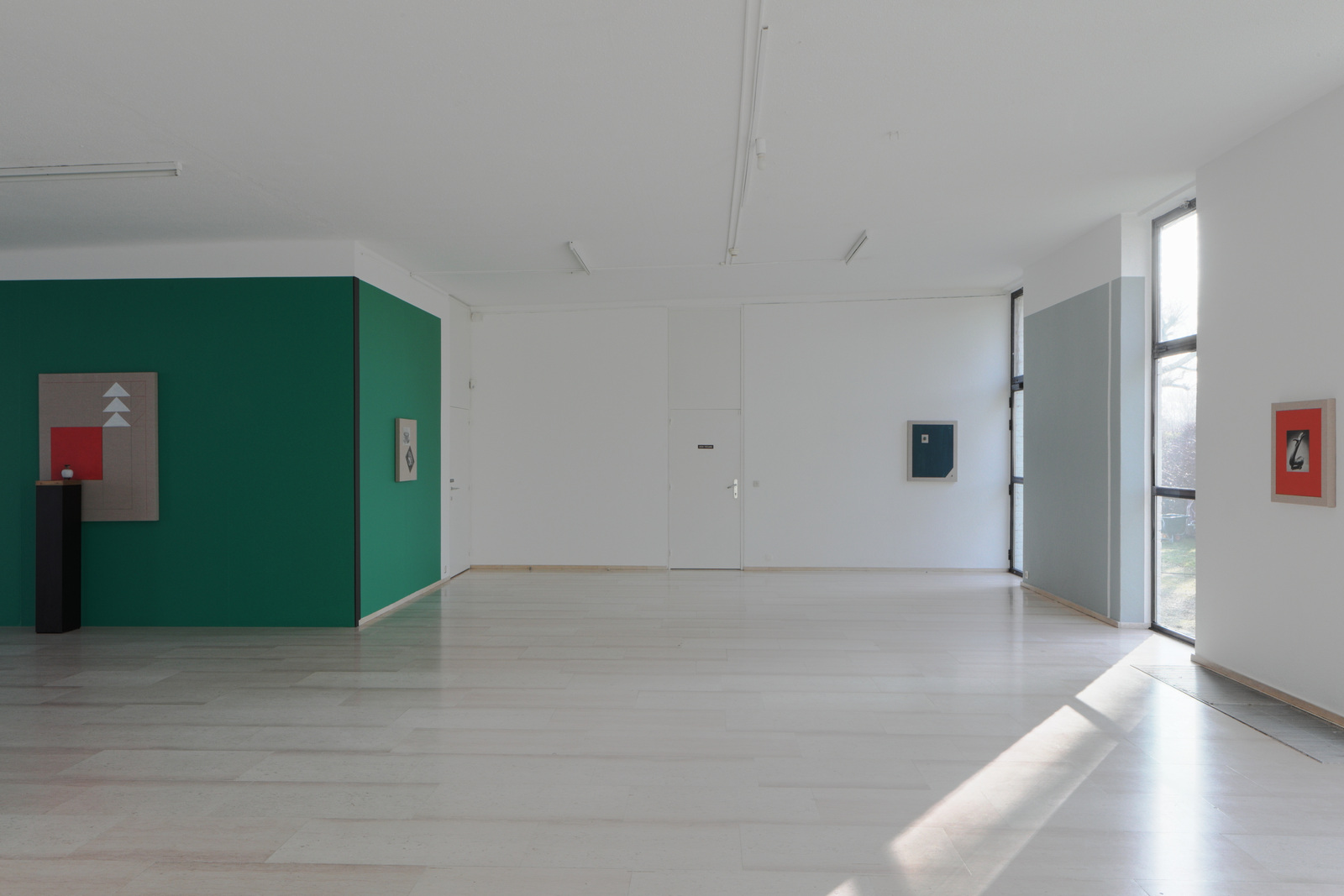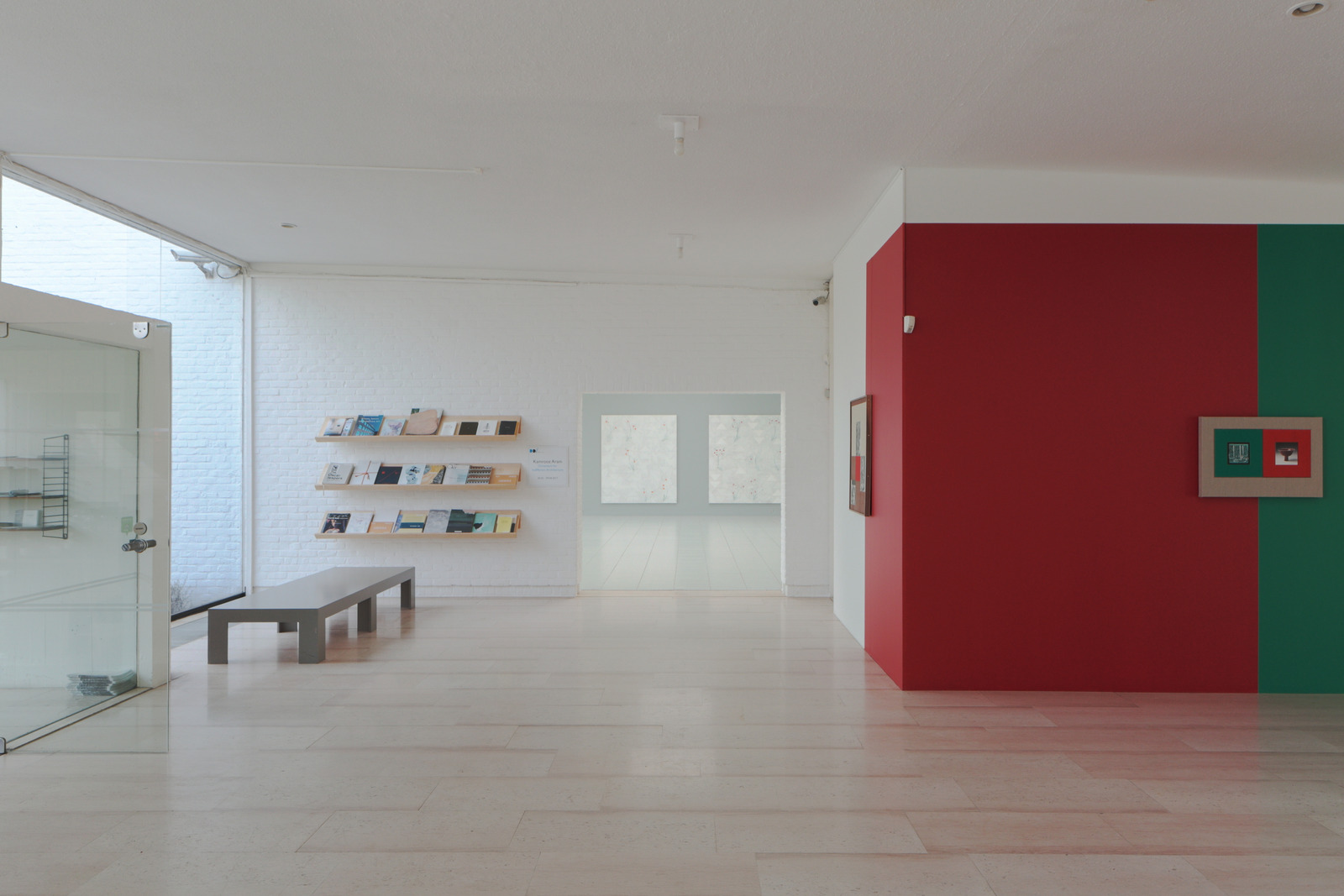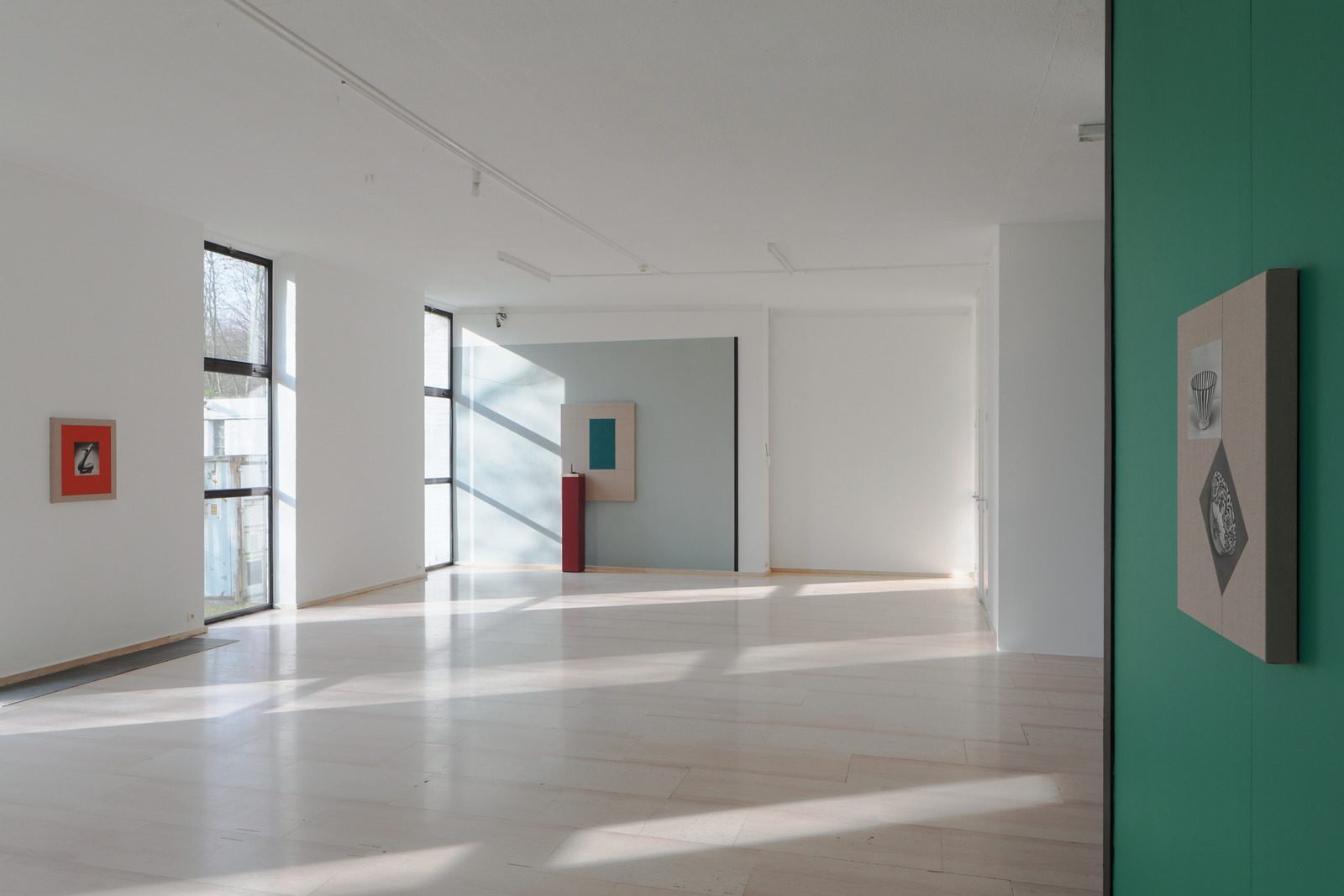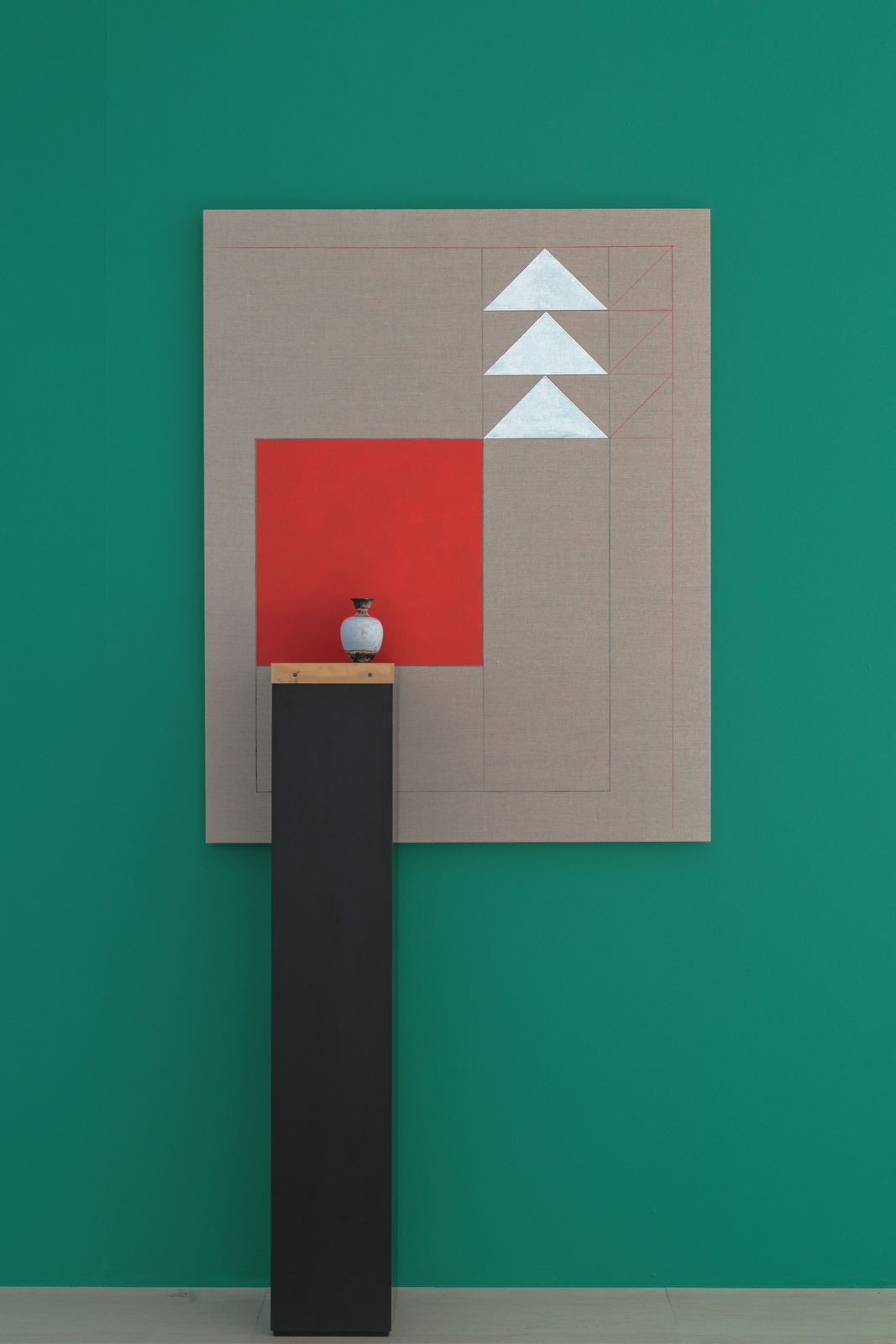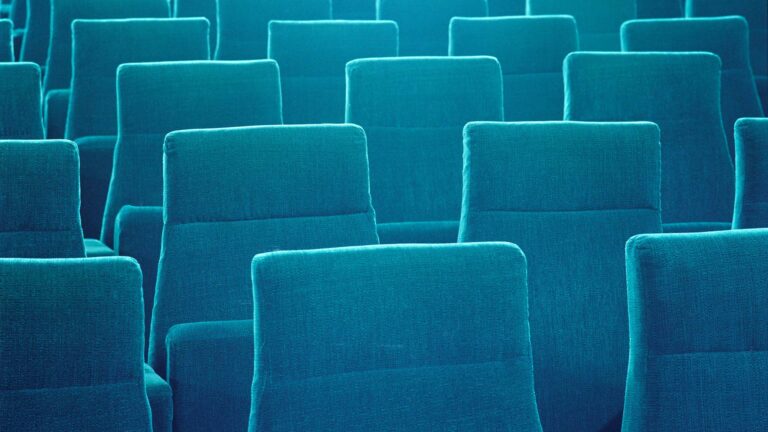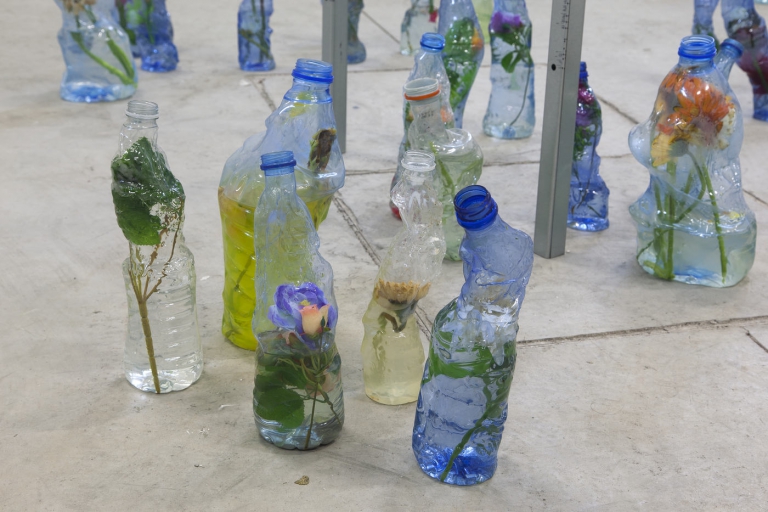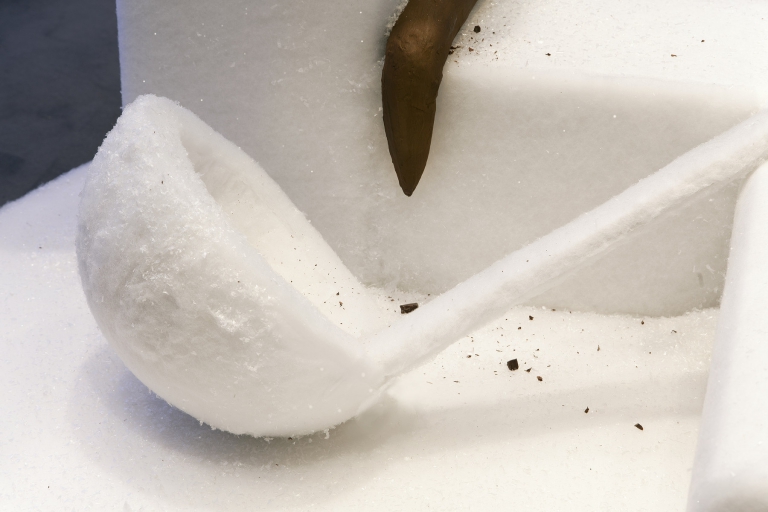Artist: Kamrooz Aram
Exhibition title: Indifferent Ornament for Architecture
Venue: Museum Dhondt-Dhaenens, Deurle, Belgium
Date: February 5 – April 9, 2017
Photography: images copyright and courtesy of the artist and Museum Dhondt-Dhaenens
Note: Exhibition booklet can be found here
Ornament for Indifferent Architecture is the first European museum exhibition of Kamrooz Aram (born 1978, Iran, lives and works in New York). His varied oeuvre often deals with the complex relationship between modern painting and ornament. Through the use of a variety of media including painting, collage and sculpture, Aram seeks a renegotiation of the hierarchical values inherent in art history. The viewer is challenged to reconsider the supposedly lesser position of the decorative arts as something inferior to modern art, which is often associated with individualist expression and originality.
Kamrooz Aram explores the potential of pattern and ornament to function as an essential element in painting. In the Western history of modernist art, which strove doggedly for the autonomy of this medium, the ornamental was met with disdain. The architect Adolf Loos declared in his famous 1908 essay ‘Ornament and Crime’ (‘Ornament und Verbrechen’) that ornament is superfluous and meaningless. Loos proposed that ornament was only acceptable for the non-Western cultures that he deemed to be inferior to modern Europeans. Nevertheless, since antiquity, for many cultures, ornament functioned as more than mere decoration and was employed as a meaningful, even conceptual, element in art and architecture. In his paintings, Kamrooz Aram combines ornamental motifs taken from Persian carpets with geometric patterns reminiscent of vernacular modernist architecture. These painterly compositions appear to be in a state of flux: building up, scraping down and wiping away paint in search of a fleeting resolution. In the end, this process is visible, as the various forms of ornament struggle for dominance with painterly gestures.
Aram’s sculptural works highlight the significance of exhibition design in shaping our understanding of the antiquities we view in museums. Encyclopedic museums such as the Louvre or the Metropolitan Museum of Art utilise distinct methods of exhibition design in effort to create a ‘neutral’ setting for the objects on display. However, the museum setting, according to Aram, is never neutral. For Aram, exhibition design and architecture is as important as the object itself in conveying meaning to the viewer. Using architectural materials such as brass, wood, and terrazzo, he creates works that focus as much on the formal qualities of design and display as they do on the objects displayed. In these works, the paintings have a dual role as both significant artworks and as passive backdrops to the objects on display. The painting, pedestal and objects can only be viewed in relation to one another. The artist does not provide wall labels identifying the displayed objects, challenging the viewer to think beyond the typical analysis of cultural significance, authenticity, authorship and provenance.
Additionally, Aram presents works from his collage series titled “Ancient Through Modern.” These collages contain pages from mid-century catalogues documenting ancient Persian art. Just as with the encyclopedic museum, the books from which the artist sources these images present ancient Persian art in an essentially modernist context. The graphic design and photographic style of the books are crucial for our perception and understanding of the objects they represent. Aram makes this explicit by referring to modern art. The pages with Persian art are as such adhered to linen canvases reminiscent of minimalist drawing and color-field painting.
Essential to all of Kamrooz Aram’s work is a commitment to the emotional and spiritual experience with contemporary art, something that is often dismissed by academia as leading to subjectivity or sentimentality. This notion is contained in the title of the exhibition Ornament for Indifferent Architecture. The title responds to a statement from the Mexican architect Luis Barragán who aimed for an emotional form of architecture. Kamrooz Aram believes that ornament – and art in general – can have the power to transform trivial or ‘indifferent’ architecture into emotional architecture.










